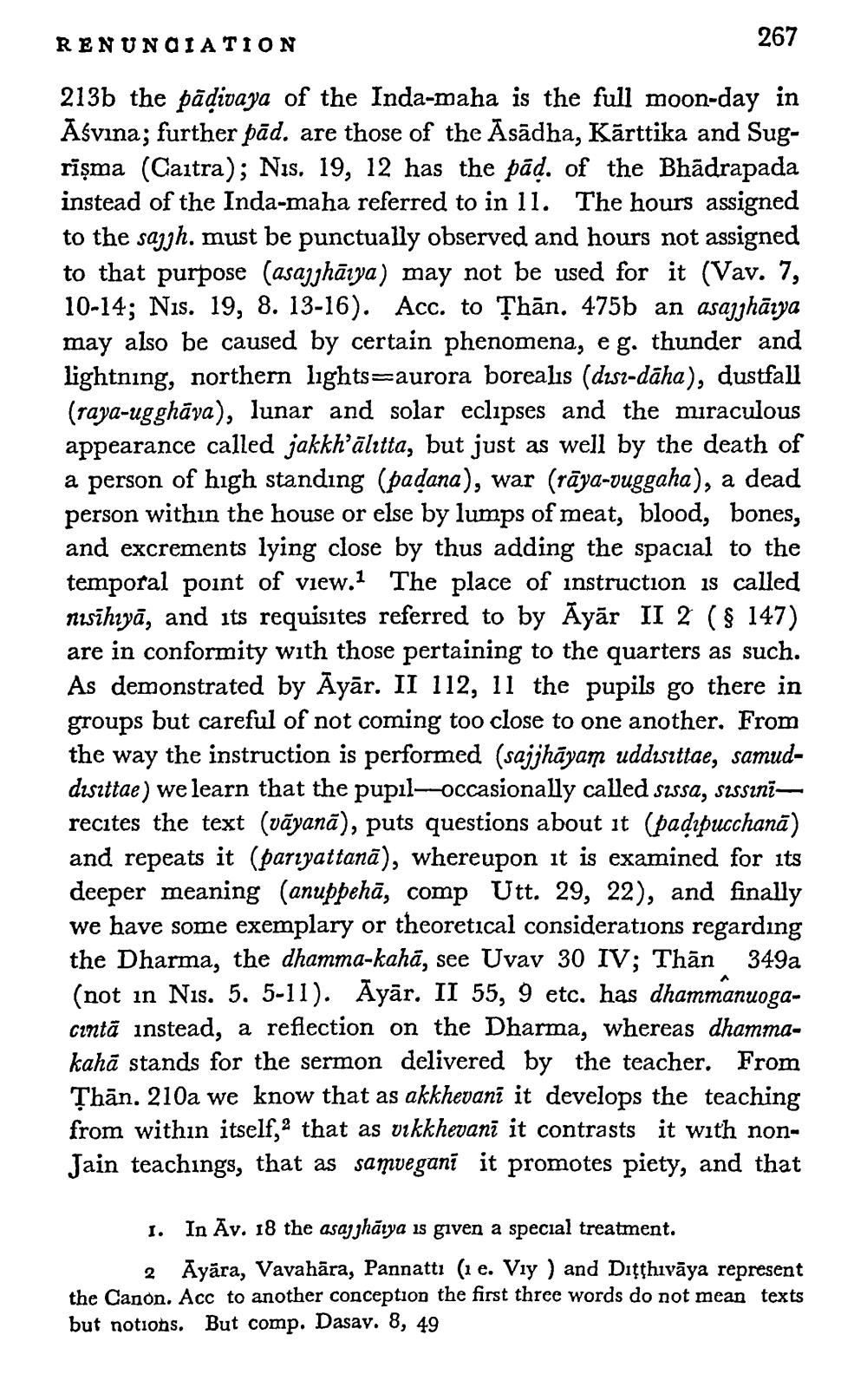________________
RENUNCIATION
267
213b the paḍivaya of the Inda-maha is the full moon-day in Asvina; further pad. are those of the Asādha, Kārttika and Sugrīşma (Caitra); Nis. 19, 12 has the pad. of the Bhadrapada instead of the Inda-maha referred to in 11. The hours assigned to the sajjh. must be punctually observed and hours not assigned to that purpose (asajjhāya) may not be used for it (Vav. 7, 10-14; Nis. 19, 8. 13-16). Acc. to Than. 475b an asajjharya may also be caused by certain phenomena, eg. thunder and lightning, northern lights-aurora borealis (dısı-dāha), dustfall (raya-ugghava), lunar and solar eclipses and the miraculous appearance called jakkh'älitta, but just as well by the death of a person of high standing (padana), war (rāya-vuggaha), a dead person within the house or else by lumps of meat, blood, bones, and excrements lying close by thus adding the spacial to the temporal point of view.1 The place of instruction is called musīhiyā, and its requisites referred to by Ayar II 2 (§ 147) are in conformity with those pertaining to the quarters as such. As demonstrated by Ayār. II 112, 11 the pupils go there in groups but careful of not coming too close to one another. From the way the instruction is performed (sajjhāyam uddısıttae, samuddısıttae) we learn that the pupil-occasionally called sıssa, sıssınï— recites the text (vāyanā), puts questions about it (padipucchanā) and repeats it (pariyattana), whereupon it is examined for its deeper meaning (anuppehā, comp Utt. 29, 22), and finally we have some exemplary or theoretical considerations regarding the Dharma, the dhamma-kaha, see Uvav 30 IV; Than 349a (not in Nis. 5. 5-11). Ayār. II 55, 9 etc. has dhammanuogacintă instead, a reflection on the Dharma, whereas dhammakaha stands for the sermon delivered by the teacher. From Than. 210a we know that as akkhevani it develops the teaching from within itself, that as vikkhevani it contrasts it with nonJain teachings, that as samveganī it promotes piety, and that
I. In Av. 18 the asajjhāya is given a special treatment.
2
Ayāra, Vavahāra, Pannattı (1 e. Viy) and Diṭṭhivāya represent the Canon. Acc to another conception the first three words do not mean texts but notions. But comp. Dasav. 8, 49




